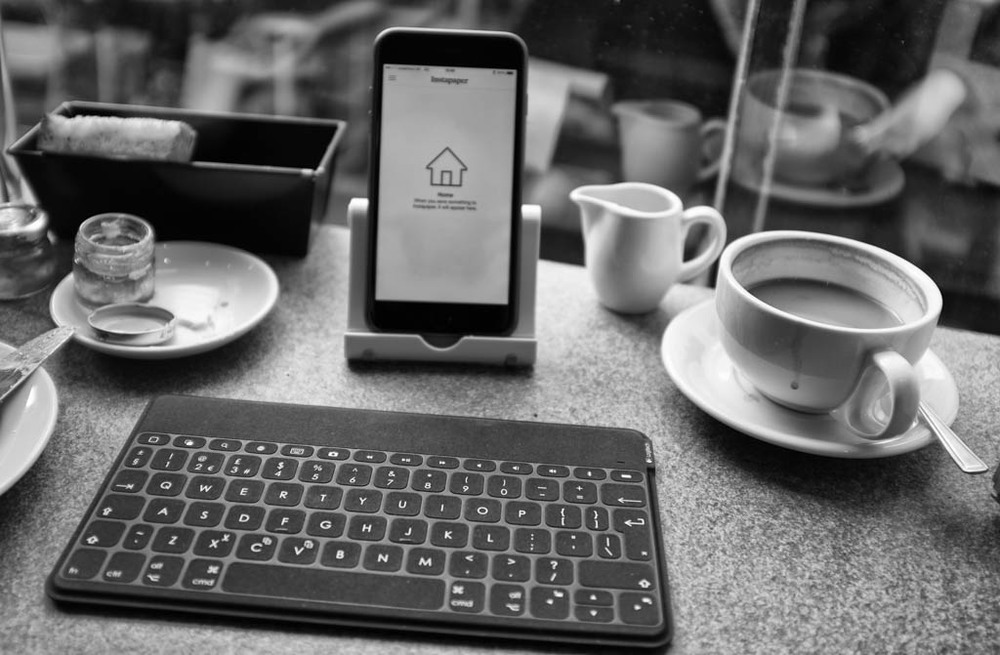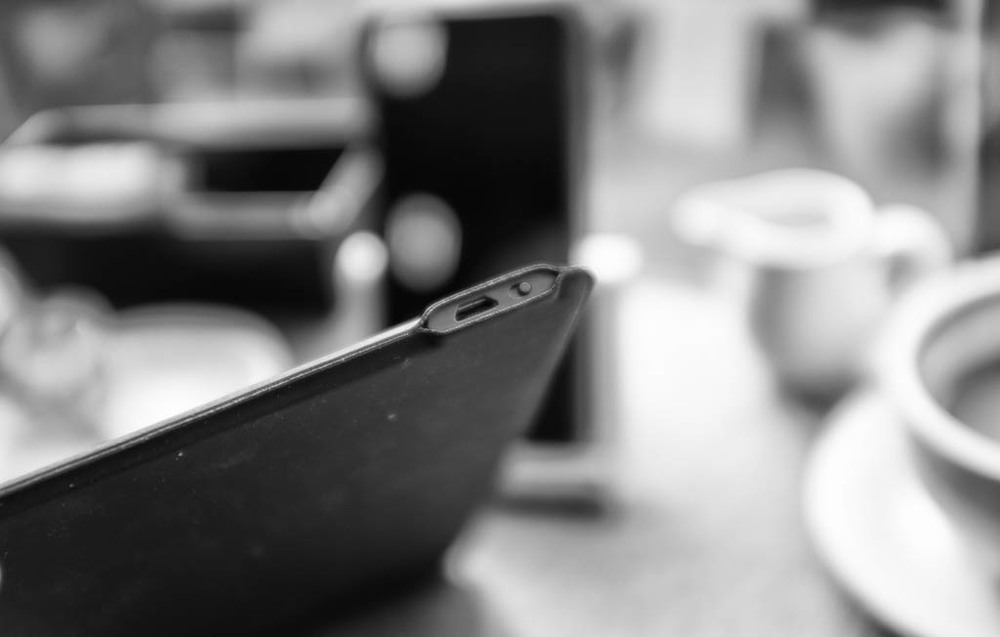
Logitech’s latest accessory for travelling iPad and iPhone users is a dedicated stand-alone Bluetooth keyboard that, unusually, built in to a case or folio. In the past I have been a satisfied user of Logitech’s folio-case keyboards but there is no doubt they add to bulk. They are also stuck to an iPad or iPad mini, leaving the iPhone out in the cold. So I looked forward to trying the Keys-to-Go keyboard which is extremely thin and light, is water resistant and is big enough to provide a full-size typing experience.
FabricSkin
Unlike earlier plastic keyboards, this device is covered in what Logitech calls FabricSkin. It has a rubbery texture, quite pleasant, which also covers the keys to prevent ingress of liquids or crumbs (both particular hazards of using a keyboard in Starbucks, it has to be said). The device is extremely thin, just 60mm, and has a near-perfect footprint; an ideal compromise between typing comfort and accuracy and portability. At 13.7cm and 24.2cm deep, it is as deep as an Apple wireless keyboard and just 4cm narrower.
Logitech has made a good compromise by keeping the pitch of the main QWERTY keys large enough for fast typing while making less-used function keys, including the return key, arrows and symbol keys slightly smaller than you would expect on a full-size keyboard. This works well and I found I was soon able to type at full speed with the sort of accuracy to be expected from the Apple wireless keyboard.
Although the FabricSkin covering is rubbery in texture, the keyboard is so light that it has a tendency to move slightly on smooth surfaces. I will almost certainly add a couple or three rubber feet to the top rear of the keyboard in order to provide greater stability. This will also have the effect of slightly raising the top of the device to further improve typing comfort. A strip of rubberised tape underneath the top of the keyboard would work just as well.

Function keys
The bottom row of the keyboard is identical to the Apple layout with function key, control, two option and command keys and arrow keys. At the top, in a dedicated row is an iOS home button, application switcher, keyboard language switcher, on/off for the virtual keyboard and a full set of volume and mute controls. My favourite, though, is the one-press screen shot button which is fast and preferable to the two-handed method used on the phone or iPad. The keyboard’s X, C and V keys double up as cut, copy and paste (when used in conjunction with the Fn key rather than the ⌘ key as we are used to with the Mac) and pressing Fn together with the left or right arrow selects text, word by word. All useful stuff.
The keyboard offers no stand facility for a tablet or smartphone and I see this as a positive. It is better to carry a dedicated stand such as the one I bought for my iPad 6 Plus. With the phone or tablet mounted on a stand and the keyboard working separately, the combination is more flexible in use than when the keyboard is attached to the device. I find it particularly convenient in cafes, for instance, when I can have the iPhone 6 propped up all the time for reading without the added bulk of the keyboard unless needed.
Switch off with confidence

One of my favourite features of all these Logitech keyboards is the dedicated on-off slider switch with clear red/green marking so you know exactly the state of play.
The Apple wireless keyboard, in contrast, has a dreadful push-push button. I am never very clear whether it is on or off. If any keyboard is left switched on and returned to the bag there can be unpredictable consequences, both in terms of inappropriate key presses and in finding that the device’s virtual keyboard remains inactive. So it is good to be able to switch the keyboard off with a degree of confidence.
The on/off switch sits in a slightly widened pod on the top right edge of the keyboard alongside a micro-USB socket for recharging. Logitech claims a battery life of three months and I will be interested to test this out. Past experience has been that the battery in Logitech keyboards lasts at least a month. I have to make a diary note to charge once a month to prevent running out while on the road. With this new keyboard I might be able to stretch the interval to a couple of months.
Fortunately, there is a status light on the top of the keyboard which shows green when the device is switched on. This turns to blue when communication with the phone or tablet is achieved (after just a second or two). A battery check key just below the light can be pressed to check status. If green, all is well. If it starts to blink red it is time to recharge.
Reliable
If my previous experience of Logitech keyboards is anything to go by, this will be a reliable device. I like the typing experience and, despite the rubber-covered keys, operation is satisfyingly positive and this leads to accuracy. Unlike some of the company’s smaller keyboards, such as those for the iPad mini, there are fewer opportunities to press the wrong key. With the smaller keyboards, for instance, the home button is placed right next to the number 1 with the result more often than not I tend to press the home button instead of the 1, thus exiting the application. This does not happen with the Keys to Go which has a separate row of function keys above the number row.
The Keys to Go keyboard is particularly well designed and competently made. It will work well with any iOS device. And, as a bonus, it links with some Smart TVs and the Apple TV. It comes in red, black or teal blue and can be bought for £54.99 from Amazon (link below). I thoroughly recommend it. Tip: The red version is £5 cheaper, I wonder why?
Logitech Keys To Go Ultra Portable Keyboard for iPad, iPhone, Apple TV and more – Black

Nice review Michael ! Question for you – the keys look flush with the surface. Is there any travel movement in the keyboard or are they just pressure sensitive? Was it difficult to type relative to a standard Apple Bluetooth keyboard?
Thanks, Austin. Although the keys are covered by the waterproof material, they do have a satisfying clunk just like a normal keyboard. However, because of the rubberised fabric, typing is quieter than on plastic keyboards. All in all, this is a very nice addition. I have to say that the Apple wireless keyboard is probably faster–the letter keys are slightly larger and wider spaced than on the Logitech. But the difference is not as great as it would have been had Logitech not reduced the size of the control and function keys. As you know, however, the Apple keyboard has its problems for use as a portable device. First, it is bulky because of the battery sausage; second I can never tell when it is switched on or off. If left switched on and placed in a bag (as I found myself doing too often) it will continue to activate the iPad or iPhone with unpredictable results. Also, annoyingly, when you pull out the device to make a note the virtual keyboard is not working because the keyboard is still connected.